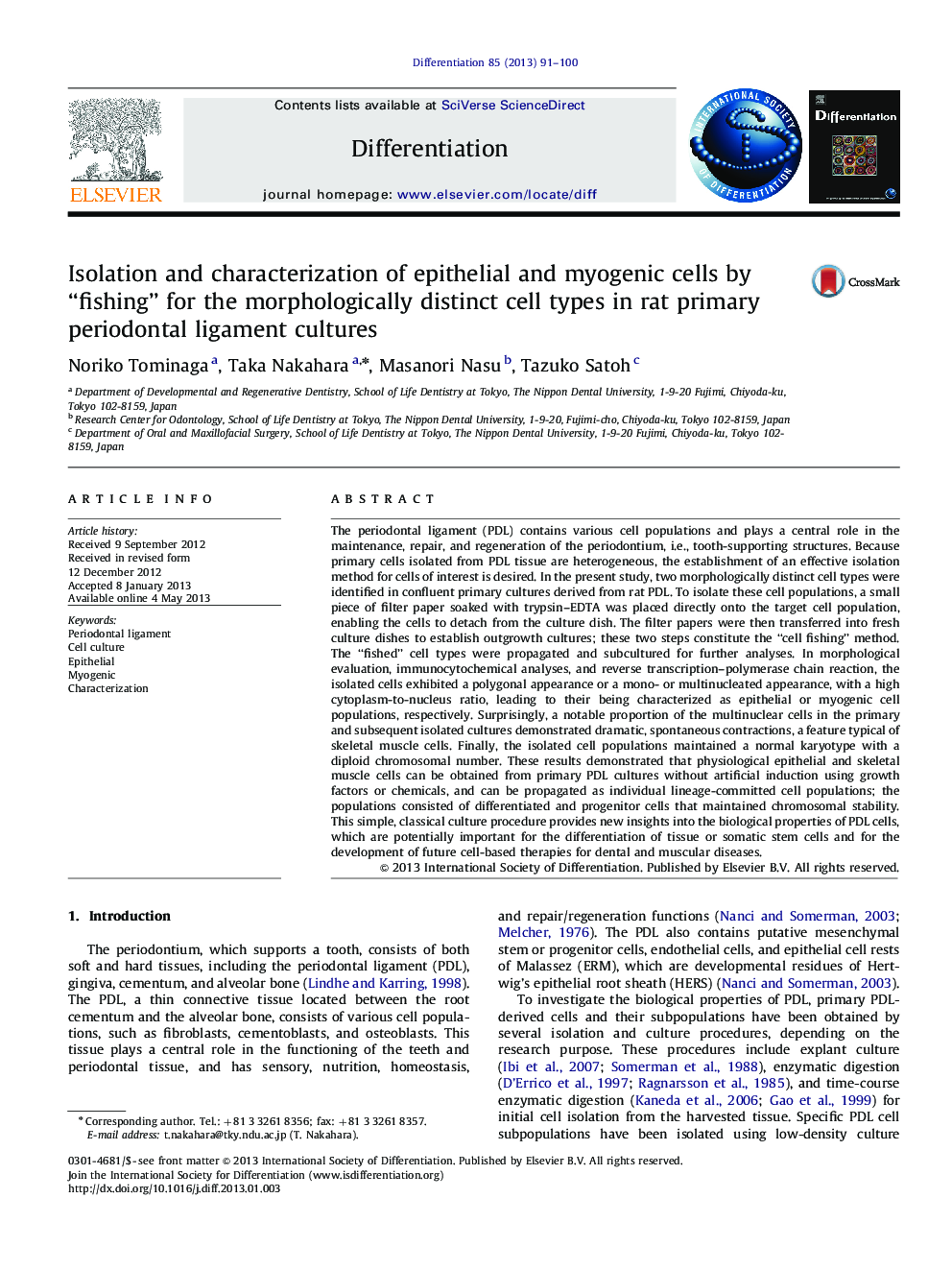| Article ID | Journal | Published Year | Pages | File Type |
|---|---|---|---|---|
| 2119487 | Differentiation | 2013 | 10 Pages |
The periodontal ligament (PDL) contains various cell populations and plays a central role in the maintenance, repair, and regeneration of the periodontium, i.e., tooth-supporting structures. Because primary cells isolated from PDL tissue are heterogeneous, the establishment of an effective isolation method for cells of interest is desired. In the present study, two morphologically distinct cell types were identified in confluent primary cultures derived from rat PDL. To isolate these cell populations, a small piece of filter paper soaked with trypsin–EDTA was placed directly onto the target cell population, enabling the cells to detach from the culture dish. The filter papers were then transferred into fresh culture dishes to establish outgrowth cultures; these two steps constitute the “cell fishing” method. The “fished” cell types were propagated and subcultured for further analyses. In morphological evaluation, immunocytochemical analyses, and reverse transcription–polymerase chain reaction, the isolated cells exhibited a polygonal appearance or a mono- or multinucleated appearance, with a high cytoplasm-to-nucleus ratio, leading to their being characterized as epithelial or myogenic cell populations, respectively. Surprisingly, a notable proportion of the multinuclear cells in the primary and subsequent isolated cultures demonstrated dramatic, spontaneous contractions, a feature typical of skeletal muscle cells. Finally, the isolated cell populations maintained a normal karyotype with a diploid chromosomal number. These results demonstrated that physiological epithelial and skeletal muscle cells can be obtained from primary PDL cultures without artificial induction using growth factors or chemicals, and can be propagated as individual lineage-committed cell populations; the populations consisted of differentiated and progenitor cells that maintained chromosomal stability. This simple, classical culture procedure provides new insights into the biological properties of PDL cells, which are potentially important for the differentiation of tissue or somatic stem cells and for the development of future cell-based therapies for dental and muscular diseases.
Graphical abstractFigure optionsDownload full-size imageDownload high-quality image (210 K)Download as PowerPoint slideHighlights► Rat whole tooth culture yielded primary periodontal ligament (PDL) cells. ► In the confluent cultures, we identified two morphologically distinct PDL cell types. ► To isolate cells, a new “cell fishing” method using filter paper was developed. ► “Fished” PDL-derived cells were characterized as epithelial and muscle cells. ► The physiologically induced cells maintain their phenotype during prolonged culture.
